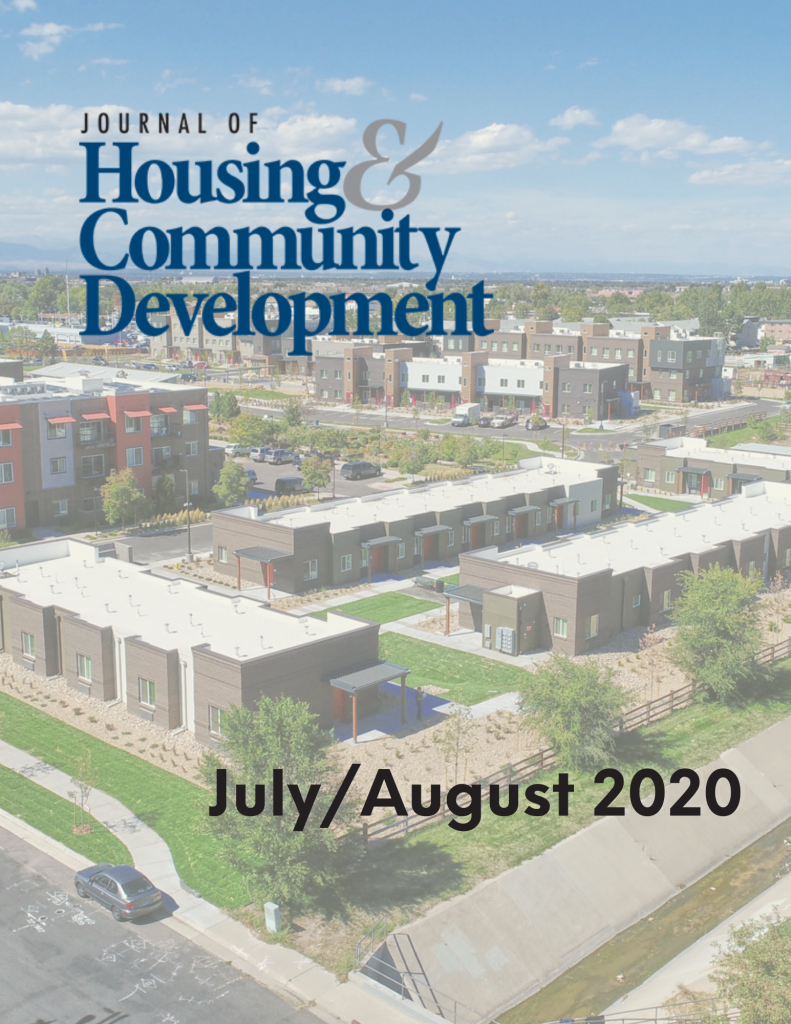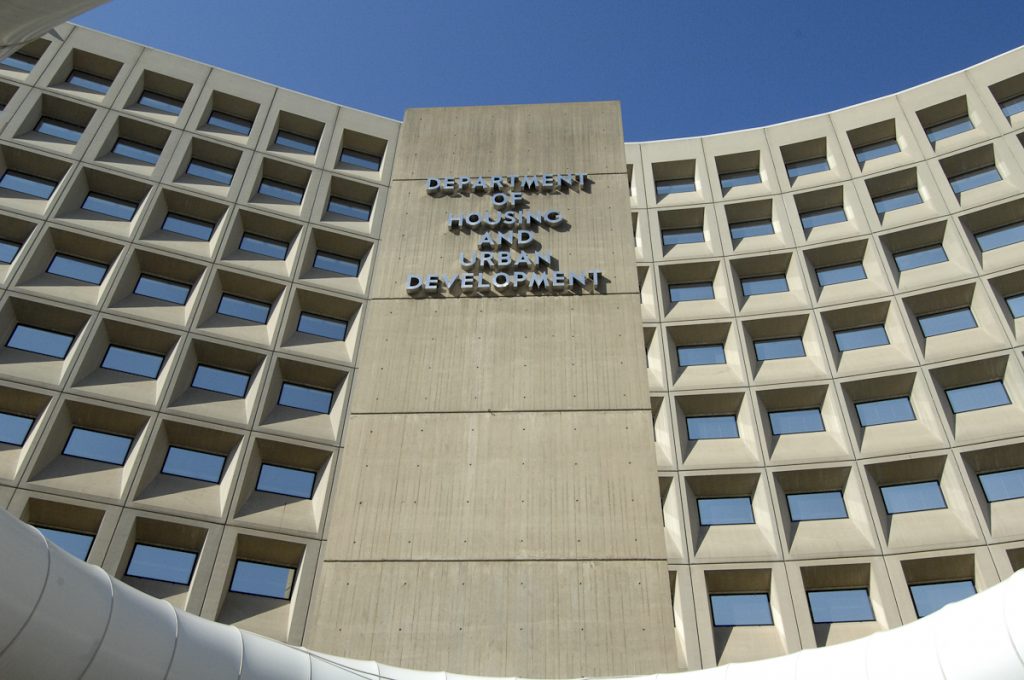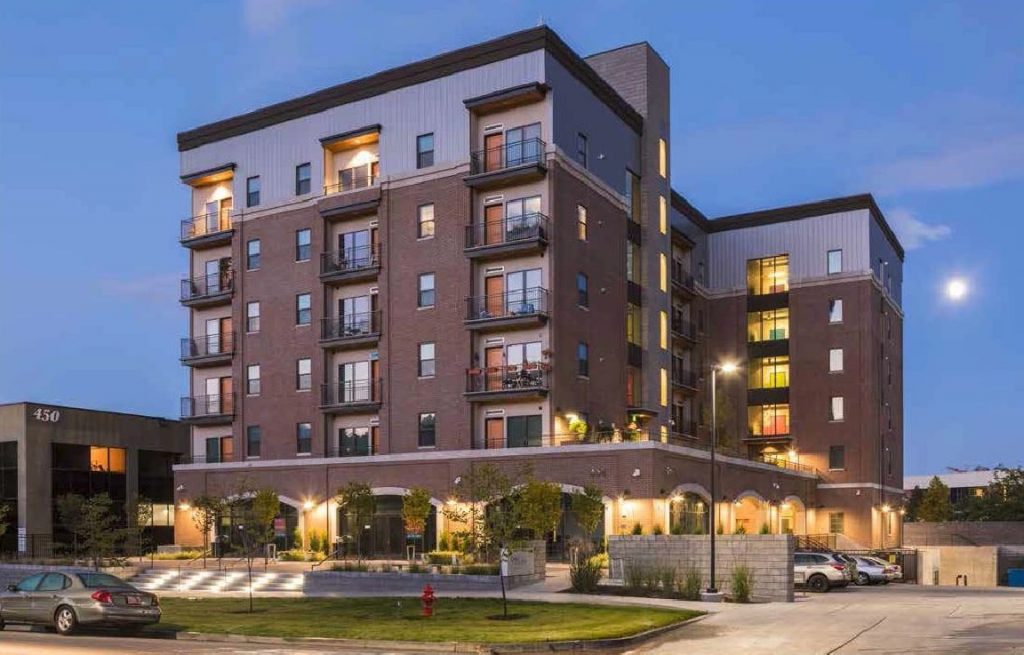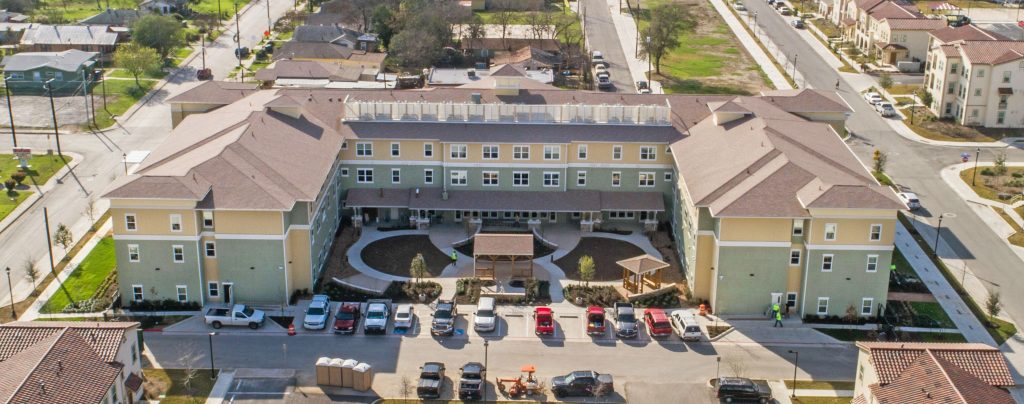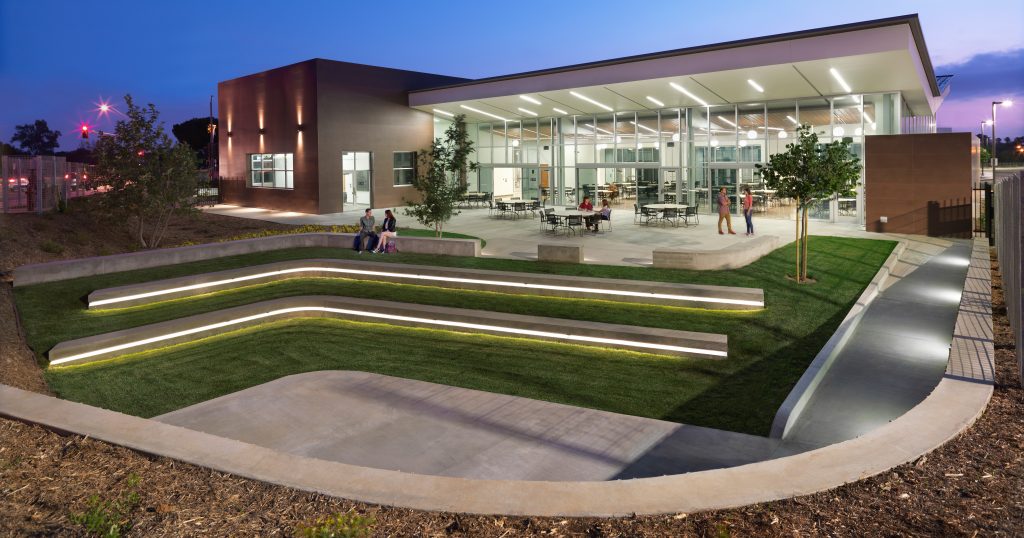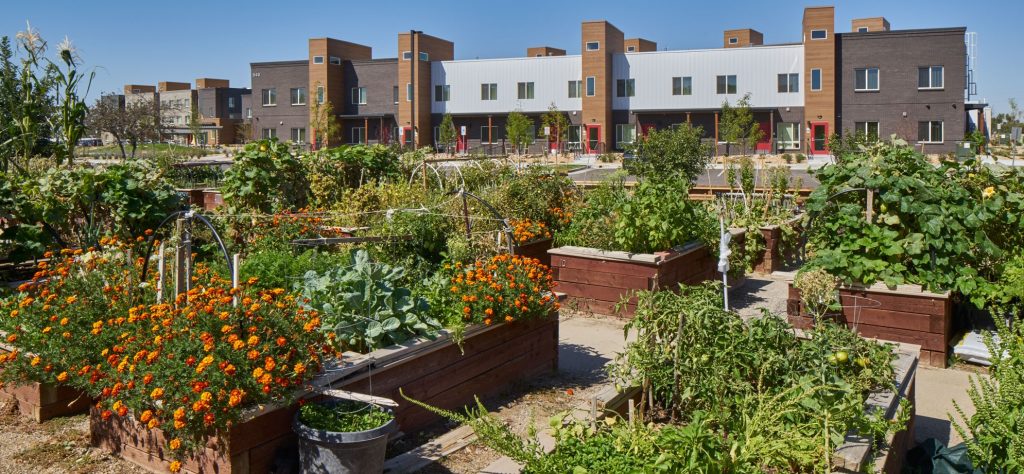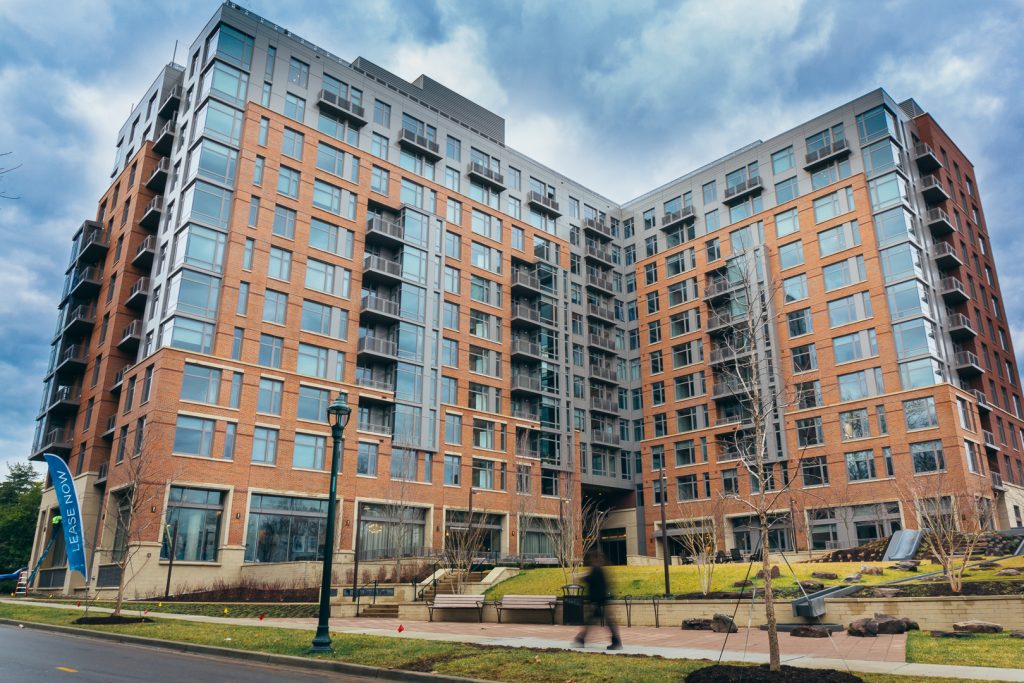Remaking the “Curve”
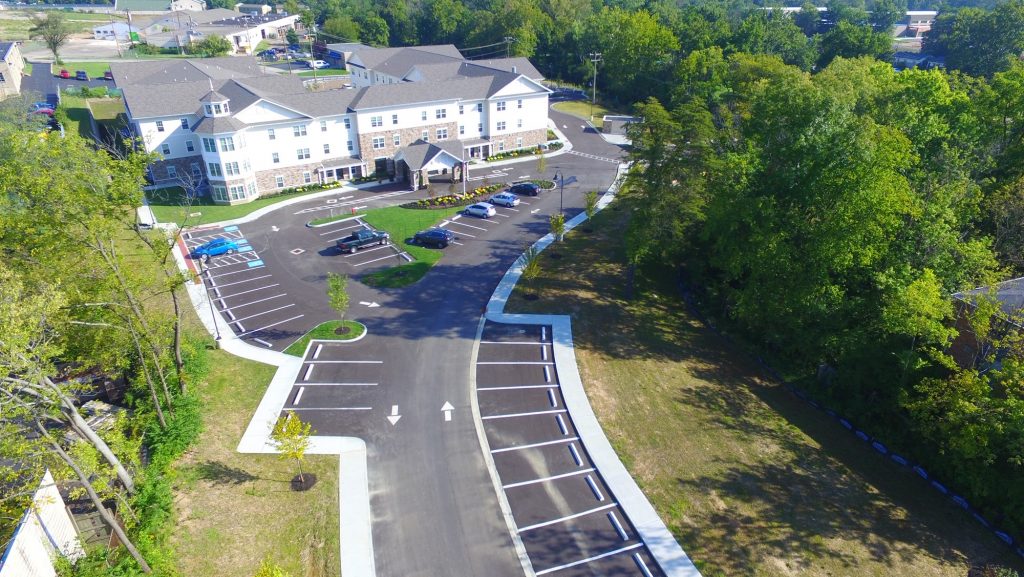
The Cincinnati Metropolitan Housing Authority wins a 2019 Award of Excellence in Project Design for partnering with the Colerain Township to revitalize a blighted area and develop innovative senior housing. Nominated from among the NAHRO Award of Merit winners each year, the Awards of Excellence winners are chosen by national juries and honored at the annual National Conference and Exhibition in October. They represent the very best in innovative programs in assisted housing and community development.
The Cincinnati Metropolitan Housing Authority (CMHA) is the 17th largest housing authority in the nation. They serve more than 11,175 families with the Housing Choice Voucher program, more than 4,800 families in Asset Management and 410 families in the Affordable Housing division.
CMHA is also the largest landlord in Hamilton County, which has a population of 813,822. In 2012, a Hamilton County housing study showed there was to an insufficient supply of accessible housing for the increasing elderly population in the county. The same year the study was released, Colerain Township asked CMHA for assistance in revitalizing the Groesbeck neighborhood and providing housing for their growing elderly population. CMHA committed to design and build a 70-unit property that would provide affordable housing for seniors aged 55 and above.
The Groesbeck neighborhood was in need of revitalization. Jonrose Avenue, also known as the S Curve, housed a dozen multifamily properties with high vacancy rates and substandard living conditions. During heavy rains, the basement units in some of the buildings would flood; affected residents had to live in tents in the backyard of the property until the water subsided.
The 12 buildings were responsible for 79 percent of the reported crime in the area, and violence was taking its toll on the community and their resources. Struble Elementary School, which was located less than a quarter mile away from the S Curve, was going to close its doors after 57 years and move to a new location – they felt it was no longer safe to drive school buses through the area. The Colerain Township received a grant as well as Neighborhood Stabilization funds to remove blighted properties in the area. They were also able to acquire most of the parcels along the S Curve at little to no cost – banks that held some titles donated some foreclosed property, as did the US Marshal’s office, which had acquired one of the houses in a drug seizure.
Once the twelve multifamily units were slated for demolition, there was still a question of what to do with the property. Much of the community and many elected officials feared that the deplorable housing conditions and crime would return if affordable housing was put in the same location. To start a much-needed community conversation about affordable housing, CMHA began to attend multiple town hall and trustee meetings as well as meetings with the business community, Police Department and Fire Department. CMHA had already begun to change the stigma of affordable housing by building developments that anyone would be proud to call home. Community stakeholders, once wary of subsidized housing, began to approve of projects such as affordable housing that allowed people to age in their communities.
Both CMHA and the Colerain Township prioritized giving residents the opportunity to improve their living conditions. Before the demolition and construction began, CMHA and the Township worked closely with the families and individuals who lived in blighted buildings on the S Curve, helping them to find new homes. Families with children were given options in the same school district if they so desired. Some residents chose to live in other CMHA housing.
Great thought and consideration went into the planning, design and the name of this new development. The development was named West Union Square after Charles West, an early settler of the area. CMHA designed the building to mirror the roof line of the Colerain Township administration building. The result was an exquisite blend of the older history of the township with the new revitalization of the area. West Union Square’s interior was designed to have the look of a quaint small-town Main Street, with coffee shop, movie theater, hair salon, laundromat, post office and a small general store all located off the lobby on the first floor.
The U-shaped building provides residents with a private, town square-like green space area with a clock tower, rocking chairs, picnic tables, raised garden beds for resident use and a gazebo. The space also included walking paths that connected to the neighborhood sidewalks that lead to shopping, restaurants, and several local stores in Groesbeck. Resident safety was also taken into consideration with programmable lock systems and remote front door controls.
West Union Square was designed to be energy efficient and constructed with sustainable materials. The initial cost of the high quality, sustainable materials will save both the residents and CMHA money over time. The units were equipped with LED lighting as well as high efficiency shower heads and toilets. In the building, lights are on timed dimmers, and there are energy efficient hot water heaters and furnaces.
The official grand opening of West Union Square was a triumph, with investors, lending partners, HUD representatives, Hamilton County Commissioners, Representatives from the Congressional office, Colerain Township leaders as well as residents and neighbors all in attendance. United States Senator Rob Portman stated, “the Jonrose Avenue revitalization will positively impact the lives of many Ohioans, their families and our community.”
Members of the Ohio House of Representatives also wrote, “West Union Square is the centerpiece of the Cincinnati Metropolitan Housing Authority’s Jonrose Avenue Revitalization project in Colerain Township, and it will undoubtedly achieve a praiseworthy record of service to the area. Great care and considerable resources have been invested in this notable initiative, and we look forward to this exemplary endeavor thriving and flourishing for a long time to come. In the years to follow, this fine location will provide affordable housing to countless seniors, and it will strive to enhance the quality of life within the surrounding area.” To complete the celebration, Hamilton County Board of Commissioners officially named September 7, 2018 as West Union Square Day in Hamilton County.
CMHA’s partnership with the Colerain Township transformed a troubled site into a beautiful affordable housing development for seniors. West Union Square also became a catalyst for change in the Groesbeck neighborhood in Colerain Township and spurred economic development. The crime rate decreased to almost zero, Struble Elementary school was able to stay open, and the school district began a $20 million redevelopment project of their own. Revitalization in the neighborhood continued to grow. Also, after West Union Square opened and area crime rates decreased, Duke Energy purchased the adjacent parcels to West Union Square for future development. The story of West Union Square is just one example of how affordable housing can transform communities.
More Articles in this Issue
The Public Housing Investment Update 2020
Pandemic, Systemic Racism and Public Housing The coronavirus pandemic has changed all our lives. This devastating tragedy…Designing Around Obstacles
The Housing Authority of Salt Lake City wins a 2019 Award of Excellence in Project…Sustainable Senior Living in San Antonio
The San Antonio Housing Authority (SAHA) wins a 2019 Award of Excellence in Project Design…Building Community in Los Angeles County
The Los Angeles County Development Authority wins a 2019 Award of Excellence in Project Design…Affordability in Aurora: Quality Homes for Families and Seniors
The Aurora Housing Authority (AHA) wins a 2019 Award of Excellence in Project Design for…How Participatory Budgeting Can Create Affordable Housing and a Just Economy
This article was originally published by the National Community Reinvestment Coalition In communities of all…Creating a Vibrant and Sustainable Community
The Housing Opportunities Commission of Montgomery County (HOC) wins a 2019 Award of Excellence in Project Design for developing The Lindley, an…
